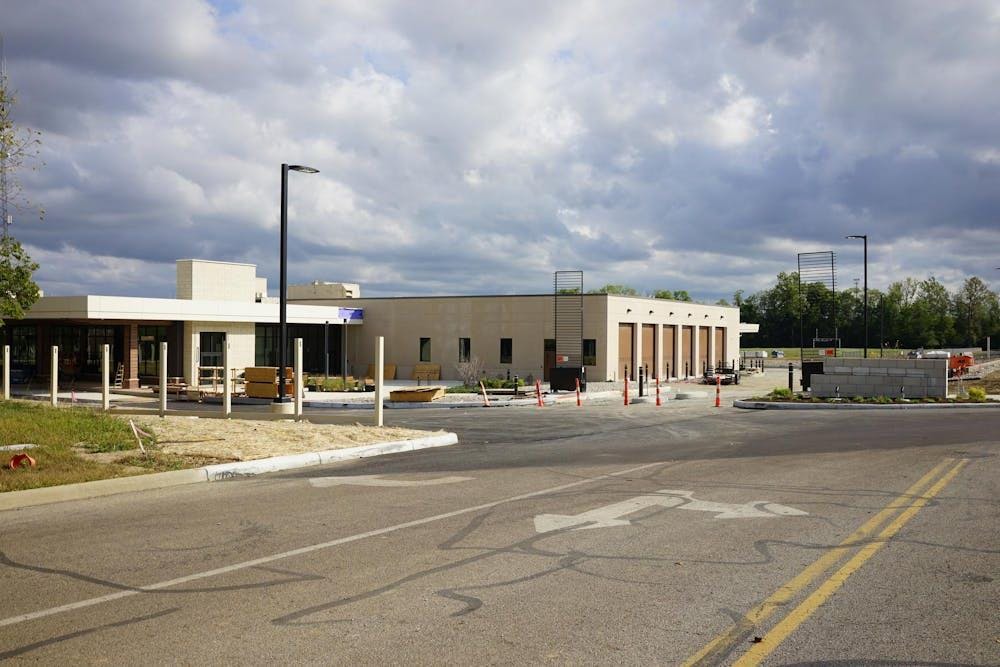Construction for an Amtrak train station in Oxford is expected to begin in 2026. The stop, located as part of the larger Chestnut Field Multimodal Station, is slated to be operational sometime later that year. It will be serviced by the Cardinal Line, which runs from New York to Chicago, stopping in a number of major cities along its path (including Cincinnati and Washington, D.C.). Concrete details about it are difficult to find, but one thing is clear: This stop has been a long time coming, and it’s nearly here. I’m excited for it.
Oxford was historically accessible by train, but the station has been defunct for decades, with the last passenger trains departing the city in the 1950s. With the service afforded by the Cardinal Line, the station would open up access to both the East Coast and the western plains.
It’s a well-established, long-range route, first running in the late 1970s. Linking Oxford into this route makes sense, especially since the Cardinal Line already runs through the city.
But it’s not perfect.
The main issue is with the Cardinal Line itself. From low ridership, low speed and even lower frequency, it’s only just about better than no rail access. Barely.
The Cardinal Line is, in Amtrak’s network, the line with the second-lowest ridership, with only 90,000 passengers in 2024. The only routes with lower ridership are either seasonal lines (the Winter Park Express, which runs to the Winter Park Resort in Winter Park, Colorado) or the Sunset Limited (which runs from New Orleans to Los Angeles). It’s not a well-utilized service.
This is partly because of its second issue: frequency. The Cardinal Line runs all of three round-trips in a week. What’s worse is that because of the length of the route and the low speed of the rolling stock, the Cardinal Line doesn’t pass through southern Ohio until after midnight. The Cincinnati stop doesn’t depart earlier than 1:40 am in the western direction, and even later on the eastern service. The time for the stop in Oxford would not be better. While no official timetable has been published, given its location on the line between Cincinnati and Connersville, Indiana (the next closest station), any stops in Oxford would likely be around 2:30 a.m. for both directions.
So, the new stop would be serviced six times in a week (three in each direction), with one of the least-used Amtrak routes in the country, and only serviced past midnight.
Given the facts, my enthusiasm wanes a bit.
Of course, this is hardly the fault of the Butler County Regional Transit Authority (BCRTA), the organization running transit in and around Miami University, or even Amtrak itself. There are plenty of reasons the Cardinal has lower ridership, and running trains in the United States is famously pretty difficult in the modern era, given the prevalence of the Interstate Highway System and air travel. Years of neglect and underfunding have weakened the system nationwide.
Ohio, in particular, is even worse. Discounting Cleveland’s Rapid light rail system, you can count the number of stations on your hands (seven, six of which are in northern Ohio). Columbus hasn’t been serviced by passenger rail since 1979, and it is the largest city in the nation without any rail service. Akron and Dayton also do not have any rail access.
Nevertheless, the new station is a good thing. Even if utilization will be low, it’s a foot in the door. Once the station is in place, it takes much less effort to start ramping up access. Across the state, not just in Oxford, plans and ideas are being proposed to restore lines and reconnect cities.
Enjoy what you're reading?
Signup for our newsletter
In Ohio specifically, the so-called “3C+D” line is a proposal to reconnect major population centers in Ohio (Cincinnati, Columbus, Cleveland and Dayton) with service three times a day. For now, it’s just a proposal; however, it’s a popular one with a decent chance of actually happening, at least in some form.
The state of our national rail network is bad, but it’s not dead.
This new stop isn’t as much as some of us had hoped for, and is a slightly painful reminder of what we could have, but it’s still a massive step in the right direction. It’s a good start, and someday I hope to use it myself.
Charley Babb is a sophomore majoring in professional writing. He is an opinion writer for The Miami Student, and he is an active fencer in the Miami Medieval Club. He likes reading and creative writing in his free time.




